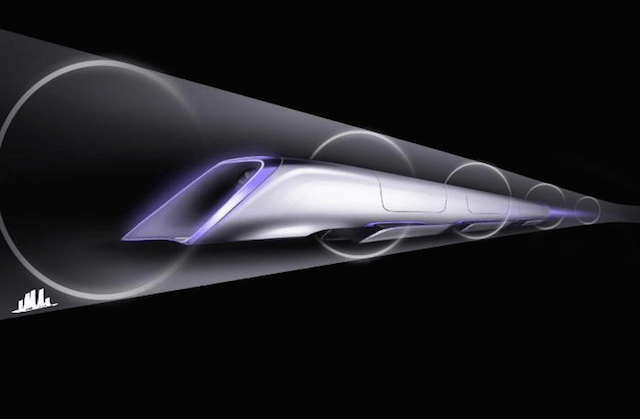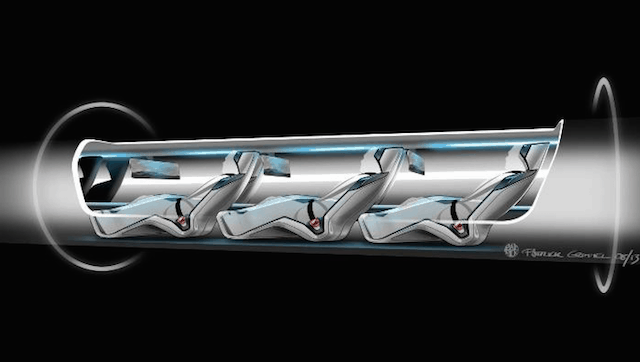Addressing the Construct//Disrupt conference hosted by BaseStone in London last week, Bibop G Gresta, COO and deputy chairman of Hyperloop Transportation Technologies said the 760mph capsule-based transportation system could soon be a reality.
“We see the UK as one of the first possible candidates for the construction of a full length Hyperloop,” he said. “We at Hyperloop Transportation Technologies have the technology to connect London to Glasgow in as little as 30 minutes. And we could build it within five years.”

The idea of the Hyperloop was put forward in a white paper released by Musk in 2013. Since then a number of independent companies, including Hyperloop Transportation Technologies (HTT) and Hyperloop Tech have been established to develop the concept. Neither is directly affiliated with Musk, although his company SpaceX has pledged to build a test track near its California headquarters to accelerate the development process.
The Hyperloop concept is based around individual pods running in sealed tubes, which are kept at very low pressure (around 1 millibar) by a series of pumps. A cushion of high-pressure air supports the pods without the need for conventional rails or magnetic levitation. This cushion is generated by a compressor, aided by aerodynamic effects from the pod’s motion through what little air remains in the tunnel.
The same compressor is used to suck air away from the front of the pod, which is then expelled out the back, eliminating pressure build up as it travels down the tube and assisting with propulsion. Linear induction motors would be used to accelerate the pod initially, with periodic boosts every 70 or so miles.

Feasibility
Gresta’s suggestion of a London-to-Glasgow Hyperloop has certainly stirred debate, but could it really be with us in five years’ time?
A CFD study carried out by Ansible in 2013 concluded that the idea was aerodynamically feasible, although it would require careful design of the pods to prevent areas of the airflow going supersonic and generating a shockwave.
A far bigger concern, however, is the infrastructure required to support it. For the pod to travel at 760mph, turns and elevation changes would have to be kept to a minimum.
Musk suggested mounting the Hyperloop on a series of pylons, typically around six metres tall. In theory, this would enable the tubes to pass over the top of small obstacles and smooth out minor elevation changes, but there’s a limit to how far you can go before cuttings or tunnels would become required – particularly on a hilly and densely populated route like London to Glasgow.
“Assuming we’re just talking about building time, it may be possible to construct such a structure of that length in five years,” Alex Siljanovski, chartered engineer and founder of BaseStone, told The Engineer. “One of the key advantages of Hyperloop is that it’s designed to be run on pillars rather than through tunnels, which should be faster in delivery than tunnelling. Also, the use of a tube with a regular diameter across the entire length lends the construction of the structure to off-site modular building which, depending on how much happens in parallel, could result in a fast delivery method. What the cost of delivering such a structure in that kind of time would be, however, is another story.”

Aside from the engineering challenges, gathering all the necessary planning consents and land purchases would be a huge undertaking. “If the hyperloop needed to pass through areas of natural beauty for example, it is easy to imagine that the tube would need to either be taken underground or re-routed. If there are noise concerns, there may be resistance from residents that the loop passes near,” said Siljanovski. “Many of these challenges would be familiar to anyone involved in HS2.”
Reporter’s view: is Hyperloop on track?
Whether or not a Hyperloop of this scale would be feasible in the UK remains open to debate, but there are some very credible engineers involved in the project in the US and plenty more around the world that believe it could be done. It wouldn’t be the first time one of Elon Musk’s seemingly impossible ideas became a reality.


JLR teams with Allye Energy on portable battery storage
This illustrates the lengths required to operate electric vehicles in some circumstances. It is just as well few electric Range Rovers will go off...